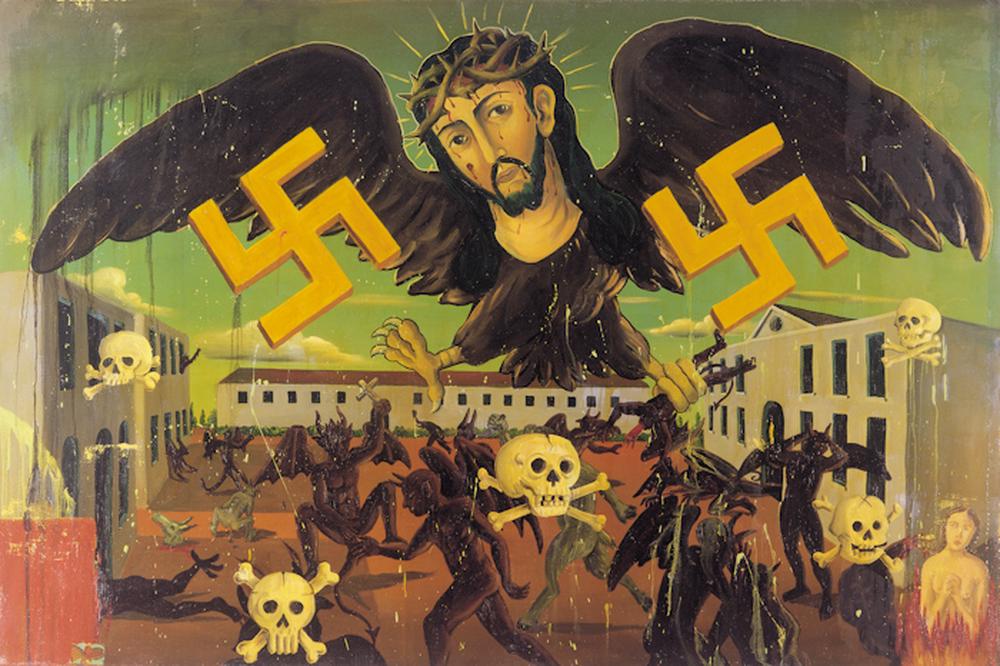Manuel Ocampo. Virtue and Vice

The San José Museum of Art acquired Manuel Ocampo’s Untitled (Burnt Out Europe) (1992) in 2001, ten years after the controversial work was censored from the main gallery of Documenta IX for its use of swastikas. In the painting, anachronisms and disparate signs appear on a common plane.1 The crucified head of Jesus on the body of a bird of prey, whose wings are adorned with swastikas, hovers over the courtyard of what could be a Spanish colony’s Catholic mission or a Holocaust concentration camp; perhaps a hybrid combination of the two, the barracks are run by demons. Founded in 1955 with the express intention of countering Nazi censorship of avant-garde art, the contemporary art exhibition Documenta opens every five years in Kassel, Germany. That Ocampo’s painting was censored from its prominent position in the 1992 exhibition corroborates the artist’s belief that virtue and vice are interchangeable attributes of moral being that must be constantly negotiated and that often intertwine despite efforts to discern one from the other. Those desiring to be free of censorship become censors themselves. Within Untitled (Burnt Out Europe), Jesus is likewise subject to this duality. He is depicted as suffering at the hands of Roman soldiers, who placed a crown of thorns on his head, and yet he extends his own talons to catch and punish the demons below. This figuration critiques the attempt of powerful individuals and nations to deem themselves of higher virtue in order to justify their vice.
Kenneth Baker, “Perverse Beauty,” in Manuel Ocampo: Fear of Kitsch Existence, ed. Menene Gras Balaguer (Barcelona: Casa Asia, 2017), 57. ↩︎